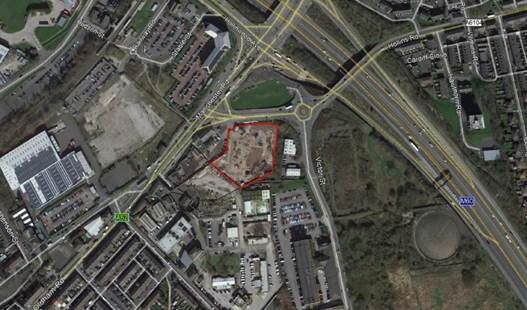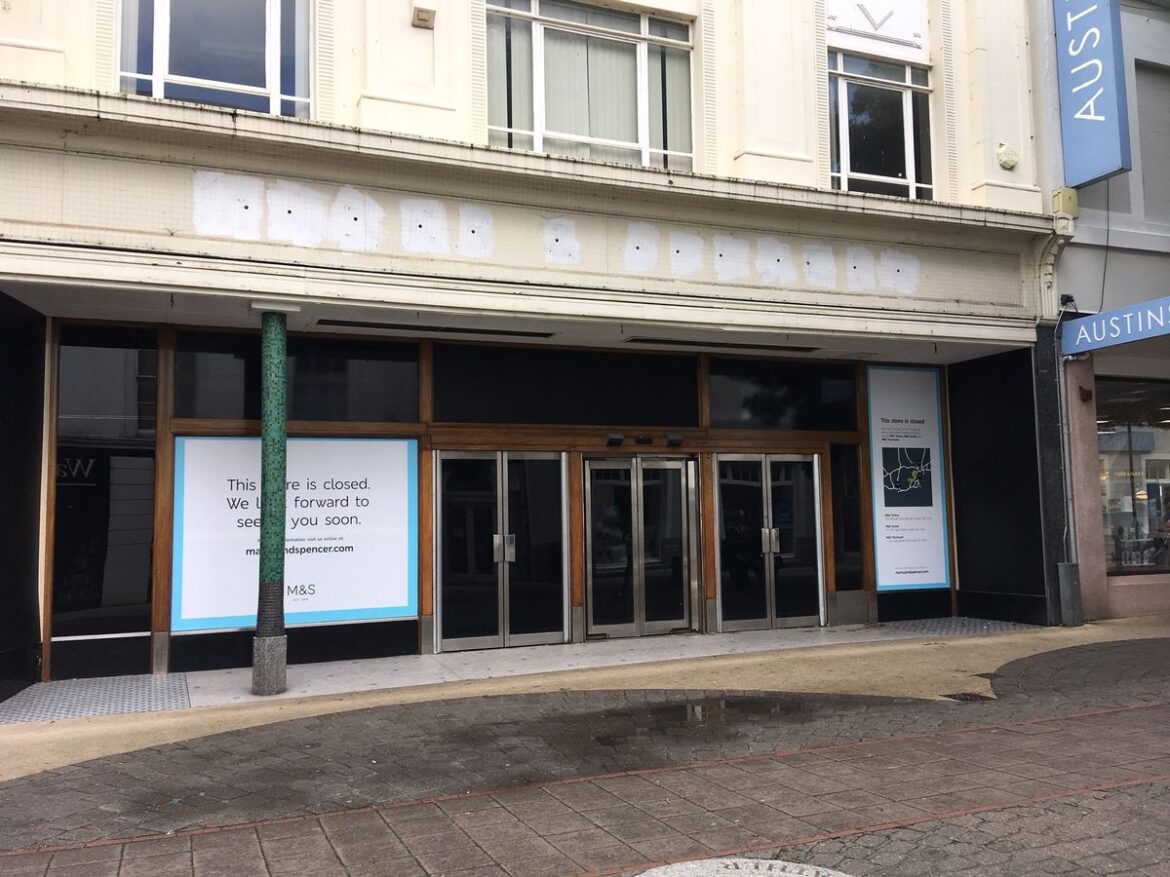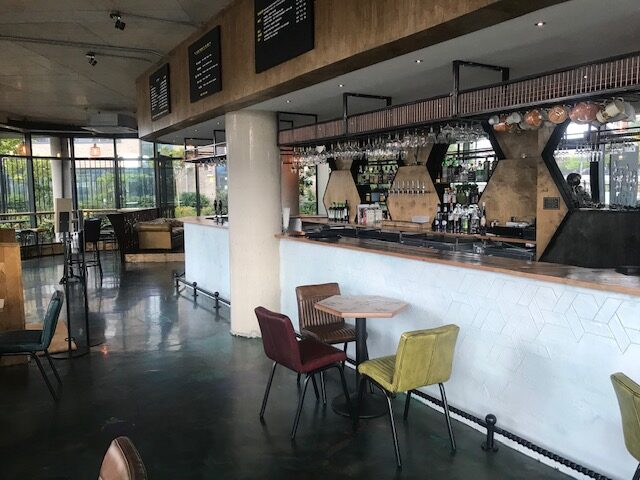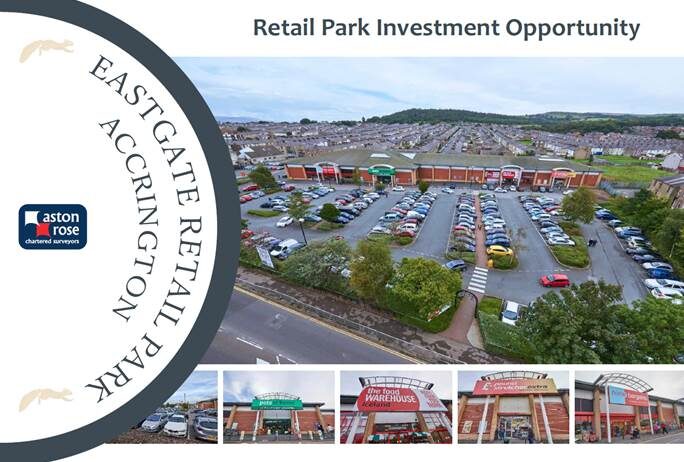Letting completes to Roy Castle Foundation at 35/37 School Road, Sale. Within a 3 month period the property was purchased, refurbished and let.
Highly prominent retail premises in the heart of Middlewich . Should you be interested in the unit comprising 1,175 sq ft please call Conor Mulloy.
Acting on behalf of A.O. Ferguson (2000) Ltd, we are pleased to advise that the sale of the former Windsor Mill site in Hollinwood has completed. The prominent roadside site extends to 1.45 acres and has been acquired by Portcullis Hollinwood Ltd.
Chapter 2 – The Rise of Independence.
Three news stories published this week have reinforced our belief that there is hope for the High Street – in the form of the independent retailer. As the national brands grapple with legacy issues and adapting to the digital age, independent retailers have shown themselves to be more agile.
Firstly, M&S announced their first trading loss in 90 years – £87.6m. This was attributed to a poor performance in Clothing and Home sales. The bright star was the continuing strong performance in food sales – up by 2.7% and expected to accelerate as the company reaps the benefit of their new trading relationship with the online platform – Ocado. According to Steve Rowe, the CEO, Covid has forced the company to implement three years of change into a single year. The company has allocated £120m to fund further store closures.
Secondly, a report from Local Data Company (LDC) confirms that small shops have been better at surviving the virus than big ones. LDC have been studying the performance of the top 500 Centres (frankly, I didn’t know there were that many!) for the past decade. For the period January to August, they reported that there had been 31,139 store closures and a net decrease of 7,834 shops. However, independent businesses declined by 0.54% compared with 2.77% for the national chains. Admittedly, the picture is still one of consolidation but that must be expected with the impact of lock down.
Finally, Sainsburys announced the closure of 420 Argos Stores by March 2024. They will partially be replaced by 150 new Argos outlets in store at Sainsburys. To make space, Sainsburys are scrapping their meat, fish and deli counters. The company claims to be responding to changing consumer demand – the customer does not have time to queue. I would contend that Lidl and Aldi trade extremely well without the expense of operating such facilities and they are a luxury that Sainsburys cannot afford in the low margin world of groceries and a migration towards online deliveries. However, we also believe that provenance, choice and cost remain important considerations for consumers and this creates an opening for the independent butcher, fishmonger and delicatessen.
So what does this mean? The national multiples will continue to reduce their physical presence on the High Street. They will in part be replaced by independent retailers who are able to tailor their offer to local need and react quickly to satisfy emerging trends. They will be cost conscious…..rents will be lower…. and they will want occupational flexibility…..leases will be shorter. The combined impact will be lower capital values as investors demand higher risk weighted returns. This trend is already evident although the market is in a state of transition and the full impact is not uniform. For investors, the focus will be on continuity of income and less emphasis on lease length and covenant strength. It will be critical to understand the ability of each property to generate a consistent income – regardless of the tenant type – and to foster good relationships with the tenant. Success will be reflected in the void rate.
Popped in to see Bee Orchid this morning! A local bar providing exceptional drinks and an exceptional time. A fantastic addition to Clippers Quay. #clippersquay #salford #waterfront #bar #yournewlocal
Preston Trade Park.
Unit of 5,391 sq. ft. adjacent to Howdens, Benchmarx, Euro Car Part and The Bathroom Showroom. For further information all Barrie 0161 828 8797
4,380 sqft Unit in a Prime Pedestrianised Location in Sale town centre on a To Let or For Sale basis.
For further information contact Stephen Perrett on 07836 339 350
The Filaments – A brand new mixed-use development comprising 376 apartments ideally situated next to Salford Central station.
Available October 2020 Should you be interested in the retail/leisure accommodation please call Conor Mulloy 07841661990
Acting for family office clients of Glenbrook, we are pleased to have concluded the purchase of this retail park investment. Originally, it was presented for sale at the beginning of 2018 with an asking price of £5,200,000 but investor sentiment became tainted by the malaise of the retail sector. The investment was eventually acquired for a price of £2.825m and it is expected to generate a running return of approximately 10% for the new owners.
At first glance, it is easy to dismiss this type of product. However, there is much to commend. The scheme dominates the local market and has a flexible planning consent. The occupier profile is convenience orientated and includes representation from such reputable retailers as Home Bargains, Pets At Home and Iceland. All the tenants report satisfactory trading performance and the passing rents are perceived to be sustainable. Comprising a site area of over 3 acres, and a car park for over 200 vehicles, it also includes land for additional development.
Unfortunately, the scheme lost Poundstretcher following their recent administration but there is already strong occupier interest from a replacement traditional retailer. Hence, the investment offers a stable income with asset management potential. For letting opportunities, please contact Barrie Cochrane (07778 159924)
John Lewis has always been viewed as the “bellweather” for the retail sector and their latest trading update merely reinforces the fact that the viability of traditional high streets and town centres up and down the country is being challenged more than ever before. There is a temptation to attribute short term financial performance to the cost of combating the coronavirus pandemic but the truth is that Covid 19 has simply accelerated an ongoing transition to digital platforms.
However, if you think that is simple to achieve – think again. Online platforms are expensive to operate. It is reported that the Online System Spend by Next in January 2019 amounted to £167m. The company estimates that capex on online systems will increase by 328% over the next 24 months. How many retailers can absorb that level of expenditure when margins are already under pressure?
For online retailing to succeed, the customer requires choice, value and convenience. Life for pure online players has its own challenges – particularly in respect of customer retention. It is reported that Amazon spent $11bn on advertising last year – again, how many retailers can sustain that level of expenditure?
Multi-channel retailing is the stable medium. This throws a life line to some high streets and shopping centres but against a wider picture of consolidation. There will be winners and losers. The winners will still suffer a painful readjustment in value. The losers will need to reinvent themselves – not with open spaces and statues of people who have never offended anyone – but with alternative uses for which there is genuine demand. The challenges are multiple. It will undoubtedly require local councils to step up and take the lead, but with limited resource, they will require assistance from the private sector in the form of partnerships. Sadly, there are no quick fixes. This will take time but if there is one positive from the pandemic, it has hopefully accelerated the process.






